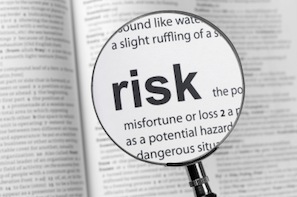 Understanding investment risk is vitally important for investors. Many people tend to think of ‘risk’ in negative terms, as something to be avoided or a threat that we hope won't materialise. However, in the investment world, risk is inseparable from returns and, rather than being desirable or undesirable, is simply necessary.
Understanding investment risk is vitally important for investors. Many people tend to think of ‘risk’ in negative terms, as something to be avoided or a threat that we hope won't materialise. However, in the investment world, risk is inseparable from returns and, rather than being desirable or undesirable, is simply necessary.
Apart from cash and some National Savings products that offer capital security, the main types of financial asset – equities (stocks, investment funds etc), fixed interest securities (bonds, gilts etc) and property all suffer from risk and price volatility. History shows that over the long-term the most volatile type of asset, equities, has provided the best returns. This means when investing in equities, they may offer the attractive returns over the long-term, however they carry the most risk in the short-term.
This is the reason why investing in equities must be seen as a long-term venture, with five years as a minimum, with ten or greater being preferable. Is there such a thing as no-risk investment? Unfortunately not and even capital guaranteed products can lose money in real terms, as over time capital will be eroded by inflation. A common definition for investment risk is the idea that to achieve higher returns in the long run you have to accept more short-term volatility. And how much volatility an investor can accept in the short-term will depend on their risk tolerance.
The risks investors face
Volatility is one risk that equity investors face, however another possibly greater risk is that an investor’s money will not grow fast enough to meet their needs. This is known as ‘shortfall’ risk. For those trying to build up as big a retirement pot as possible, this type of risk is a very real danger. To avoid shortfall risk, an investor may have to take on more risk, which could involve investing in higher risk investments.
By doing so, the investor may need to increase their risk tolerance to ensure they don’t make costly investment decisions on their journey. One such mistake is when an investor unfortunately moves out of equities into the safe harbour of cash right at the bottom of a correction – just before the equity market strongly rebounds and leaving the investor missing out on an upside move. For more on investment risk, you might find this blog post useful.
In this three part series of posts we’ll focus on risk tolerance relating to equity investing. We’ll look at how investors can assess their own tolerance to risk and why it’s important to consider investment time frame, risk capital, investment experience, understanding of investment objectives and the actual investment being considered.
What is your risk tolerance?
Risk tolerance is a topic that is often discussed, but rarely defined. It is not unusual to read an investment recommendation discussing alternatives or options based on different risk tolerances. But how does an individual investor determine his or her risk tolerance?
To help make this clear, let’s take another look at a definition: Risk tolerance is your capacity to assume volatility based on your specific financial circumstances, taking into account your psychological comfort with the possibility of incurring large short-term temporary losses.
Key factors to consider
There are many factors to consider when determining the answer to a seemingly simple question, "What is my investment risk tolerance?" The answer will vary based on your age, experience, net worth, risk capital and the actual investment or trade being considered. Once you have thought this through, you will be able to apply this knowledge to a balanced and diversified program of investing.
Spreading your risk around, even if it is all high risk, decreases your overall exposure to any single investment. With appropriate diversification, the probability of total loss is greatly reduced.
Knowing your risk tolerance goes far beyond being able to sleep at night or stressing over your investment selection. It is a complex process of analysing your personal financial situation and balancing it against your goals and objectives. Ultimately, knowing you risk tolerance – and keeping to investments that fit within it – should keep you from complete financial ruin.
When assessing your risk tolerance, it's important to consider:
- Time frame
- Risk capital
- Investment experience
- Understand your investment objectives
- Actual investment being considered.
In the next blog in this series, we’ll look at these five areas in greater depth. In the next blog in this series, we’ll look at these five areas in greater depth.
As always, if you have any questions or thoughts on the points I've covered, please leave a comment below or connect with us @ISACO_ on Twitter.
Please note past performance should not be used as a guide to future performance, which is not guaranteed. Investing in Funds should be considered a long-term investment. The value of the investment can go down as well as up and there is no guarantee that you will get back the amount you originally invested.
About ISACO
ISACO was established in 2001 by brothers Stephen and Paul Sutherland and is the first financially regulated firm to offer adventurous ISA and SIPP investors a unique personal investment service that shares on a daily basis our star-performing investor’s thoughts, personal insights and investment decisions.
Clients enjoy being informed throughout the year what ‘best of breed’ funds our premier investor currently owns, when he’s buying and when he’s moving into the safe harbour of cash – helping clients enjoy more control, manage their portfolio more effectively and benefit from the potential of outstanding long-term returns.
For more information about ISACO and our Investment Guidance Service, please read our free brochure.














